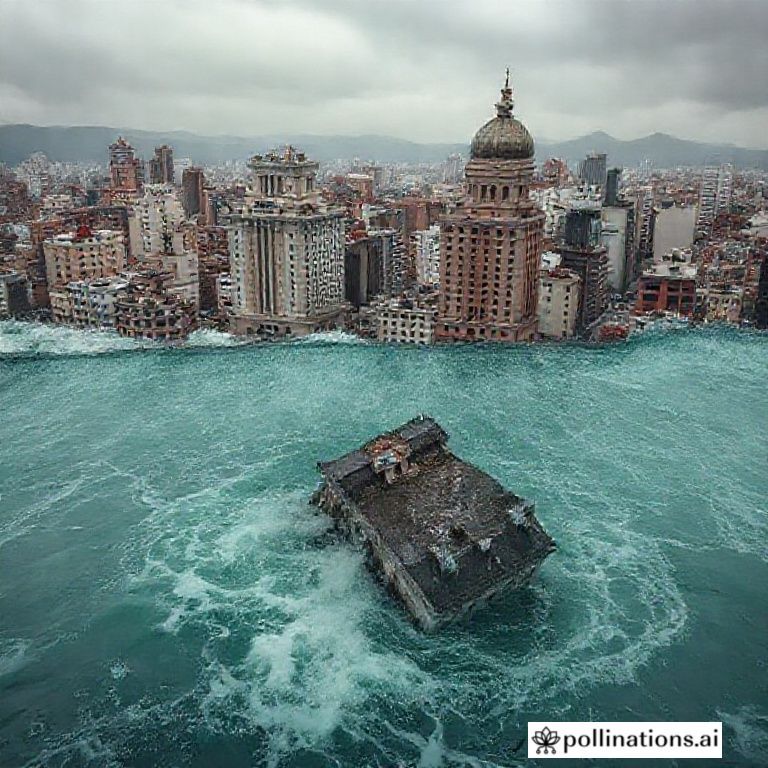Mexico City, a vibrant metropolis teeming with life, culture, and history, stands as one of the world’s most populous urban centers. But beneath the bustling streets and towering skyscrapers lies a geological reality that presents a unique challenge: the city is sinking. This isn’t a sudden catastrophe, but rather a gradual subsidence occurring over decades, raising concerns about infrastructure, water management, and the long-term stability of this iconic capital.
The phenomenon of Mexico City sinking, often referred to as land subsidence, is a complex issue rooted in the city’s unique geographical location and historical development. Understanding the causes and consequences of this ongoing process is crucial for residents, policymakers, and anyone interested in the future of this remarkable city.
The Lakebed Legacy: Why Mexico City Sinks
To understand why Mexico City is sinking, we need to delve into its history. The city was originally built by the Aztecs on an island in Lake Texcoco. Over centuries, the lake was drained to prevent flooding and create more land for expansion. However, the soil beneath Mexico City is primarily composed of highly compressible clay, the remnants of the ancient lakebed. This clay is saturated with water, and as groundwater is extracted, the clay compacts, causing the land to sink.
Groundwater Extraction: The Primary Culprit
- High Demand: Mexico City faces a significant demand for water due to its large population and industrial activities.
- Over-Extraction: To meet this demand, vast quantities of groundwater are pumped from the aquifers beneath the city.
- Clay Compaction: The removal of water from the clay layers causes them to compress, leading to subsidence. Think of it like squeezing a sponge – the water comes out, and the sponge shrinks.
The Role of Geology and Soil Composition
- Volcanic Basin: Mexico City is located in a basin surrounded by mountains, which traps sediments and contributes to the accumulation of clay.
- Varying Soil Types: The rate of sinking varies across the city depending on the thickness and composition of the clay layers. Some areas sink more rapidly than others.
Consequences of a Sinking City
The sinking of Mexico City has a wide range of consequences, affecting everything from infrastructure to public services.
Damaged Infrastructure
One of the most visible consequences is the damage to infrastructure. Buildings, roads, and pipelines are all susceptible to cracking, tilting, and even collapse as the ground beneath them shifts. This requires constant maintenance and repairs, placing a significant strain on the city’s resources. The sinking also affects the efficiency of drainage systems, increasing the risk of flooding during heavy rains.
Water Management Challenges
Paradoxically, while groundwater extraction is a major cause of the sinking, the sinking itself exacerbates water management problems. As the city sinks, it becomes more difficult to drain wastewater and stormwater, leading to increased flooding. Furthermore, the sinking can damage underground water pipes, leading to leaks and water loss.
Impact on Buildings and Historical Sites
Many historical buildings in Mexico City are particularly vulnerable to the effects of subsidence. The uneven sinking can cause structural damage to these buildings, threatening their preservation. The iconic Angel of Independence monument, for example, has required extensive repairs due to sinking and tilting.
Addressing the Challenge: What’s Being Done?
Recognizing the severity of the problem, the Mexican government and various organizations are working to mitigate the sinking of Mexico City. These efforts include:
Regulating Groundwater Extraction
One of the key strategies is to regulate groundwater extraction and promote more sustainable water management practices. This includes implementing quotas on groundwater pumping, encouraging the use of alternative water sources, such as treated wastewater, and investing in water conservation programs.
Infrastructure Improvements
Efforts are also underway to improve the city’s infrastructure to make it more resilient to the effects of subsidence. This includes reinforcing buildings, repairing damaged pipelines, and upgrading drainage systems.
Research and Monitoring
Ongoing research and monitoring are crucial for understanding the dynamics of land subsidence and developing effective mitigation strategies. Scientists are using advanced technologies, such as satellite radar interferometry, to track the rate of sinking and identify areas that are most at risk.
Conclusion
The sinking of Mexico City is a complex and multifaceted issue with significant consequences for the city and its inhabitants. While the challenges are daunting, ongoing efforts to regulate groundwater extraction, improve infrastructure, and promote sustainable water management offer hope for a more stable future. Understanding the causes and consequences of this phenomenon is essential for ensuring the long-term viability of this vibrant and historically rich metropolis. The story of Mexico City’s sinking serves as a reminder of the delicate balance between urban development and environmental sustainability.
If you found this article informative, share it with your friends and family! You might also be interested in our other articles about life and culture in Mexico.
IMAGE: A wide shot of Mexico City’s skyline at sunset, with a subtle visual representation of the city sinking slightly into the ground (perhaps a faint distortion effect). The sky is a mix of orange, pink, and purple hues. In the foreground, a historical building shows subtle cracks, hinting at the subsidence issue. The overall mood is one of concern mixed with resilience. Style: realistic with a touch of artistic exaggeration to convey the sinking concept.


